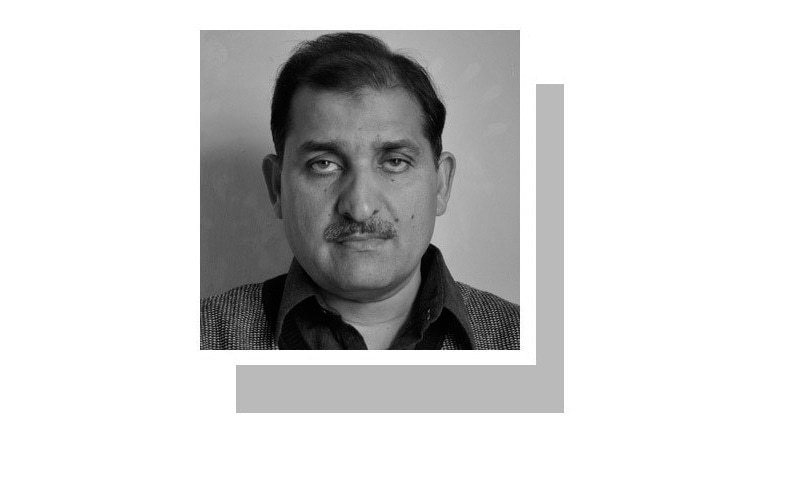
TOP American military commander Gen Nicholson’s call for the deployment of more Nato troops to Afghanistan has come with an eerie sense of déjà vu: the continuation of the longest war in US history.
While testifying before the Senate Armed Services Committee, Nicholson characterised the conflict as a stalemate. In straightforward language, his statement amounts to an outright victory for the Taliban. As if on cue, Centcom chief Gen Votel also informed senators the commanders were putting the final touches on a new strategy that would require more troops. Almost without reservation, he upheld Nicholson’s assessment of what has come to be seen as a forgotten war, and underlined the imperative of staying engaged with Pakistan to ensure the new strategy works.
Astoundingly, Defence Secretary Mattis has been tight-lipped on plans for Afghanistan, which found no mention in the president’s inaugural speech. However, he did acknowledge at a Senate hearing: “Our country is still at war in Afghanistan … we are in serious trouble. The Taliban have eroded some of our successes.”
Some US officials insist the Western-backed Kabul government remains unaffected by Taliban’s battlefield gains. Amidst this pettifoggery, no one seems to appreciate the unpalatable reality that wars (once initiated) drag on in perpetuity.
Afghan rebels look poised to wait out foreign forces.
With Afghan forces literally on the run in many parts of the country, the international coalition bafflingly chose to place politics over the grim security environment in pulling out combat troops from Afghanistan.
Outgunned by resurgent Taliban in chronic combat zones, the security forces have suffered unsustainably high casualties over the past two years. From Jan 1 through Aug 19, 2016, 5,523 Afghan service members lost their lives, and 9,665 were wounded. In 2017, the death rate is rising far above last year’s levels. The unrelenting insurgency thus poses the most immediate challenge to the US reconstruction effort and viability of the Afghan state.
The soaring casualty rates can be partly attributed to recurrent leadership failures in many police and military units. As violence escalates, a whole slew of gains in key areas (like poverty, women’s rights and the education gender gap) are eroding.
But in disregard of the ground situation, troop withdrawals were euphemistically described as force management levels. Apart from impeding the coalition’s success, the morale-busting moves have emboldened the militants.
Now familiar with the mission’s shifting timelines, an off-the-wall tactic of the Obama administration, the rebels look poised to wait out international forces. This tends to make matters worse for the US and Nato in Afghanistan.
President Trump is yet to unveil his policy on the war in Afghanistan. An impulsive leader like him can be expected to take radical foreign policy decisions.
If Trump responds positively to his commanders’ request for a new troop surge in Afghanistan, Pakistan will once again assume a key role in supporting the ill-starred American military campaign across the border.
However, Trump’s likely reliance on Pakistan is bound to evoke a negative reaction from the Afghan government, which has often ruled out engagement with the neighbour it accuses of using the Taliban as a policy instrument.
President Ashraf Ghani, feeling let down by Islamabad, says any bilateral negotiations with Pakistan will only take place in the presence of a neutral third party. One wonders who this honest broker could be, and whether or not Islamabad would accept this condition.
Apparently unconcerned about the bleak scenario, Ghani and Chief Executive Abdullah remain locked in a ferocious power struggle. They have failed to introduce badly needed electoral reforms or curb widespread administrative graft in government institutions.
If a military stratagem alone had been a panacea, Obama’s much-touted gambit of sending 30,000 extra soldiers into Afghanistan would have resulted in an outright victory. Instead, the Taliban grew stronger, something that also exposed the ex-president’s fantasy.
Hopefully, Trump will not lose sight of the current complex situation in Afghanistan. He should remember that a few thousand more service members can in no way accomplish a mission that 100,000 US troops failed to achieve seven years ago. Escalation alone does not automatically translate into success.
By any metric, the three-pronged campaign — nation-building, fighting against the Taliban and curbing the illicit drug commerce — has not yielded tangible results. But the amount spent on the mission is simply staggering: $1 trillion and counting. The reconciliation drive is a track that has lamentably gone cold and deserves the best possible shot.
The writer is a freelance journalist based in Peshawar.
Published in Dawn, March 19th, 2017










































